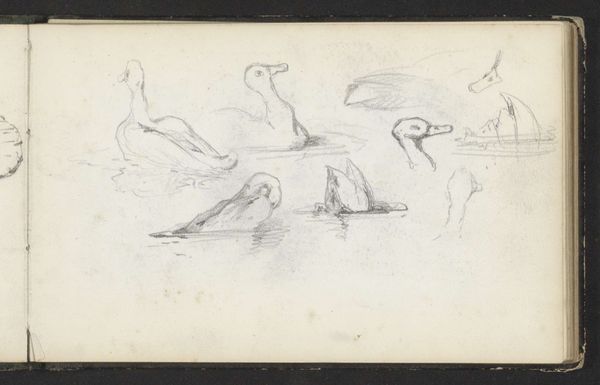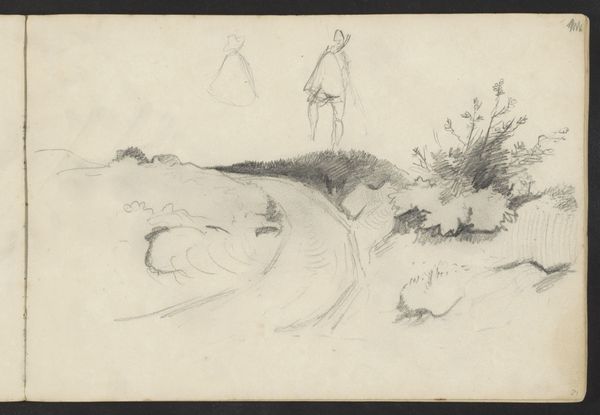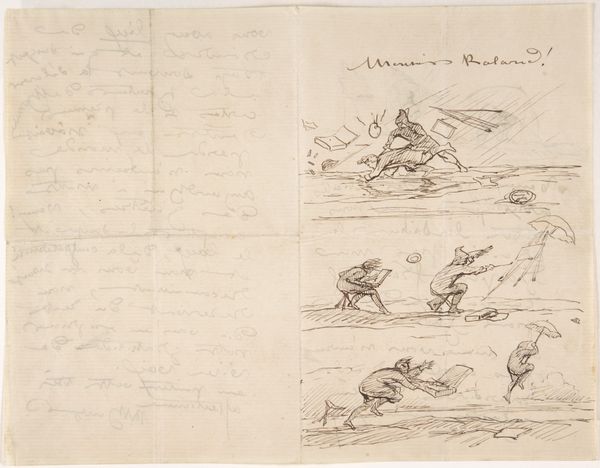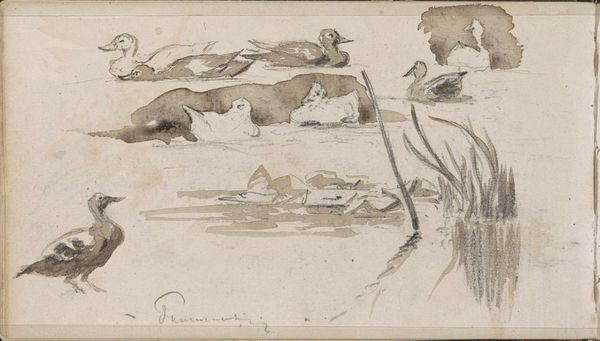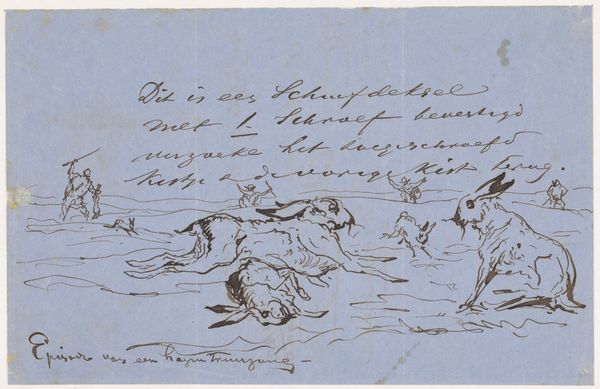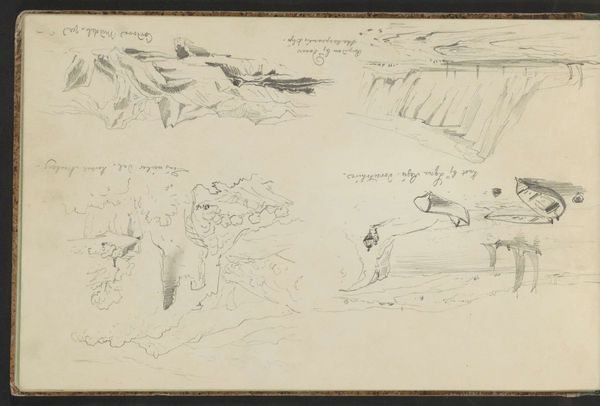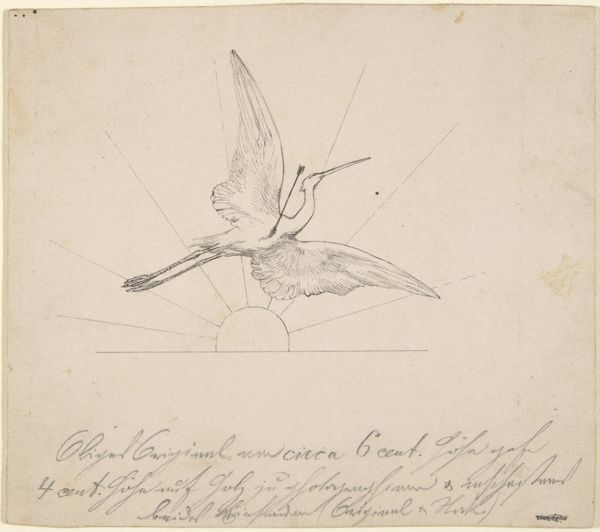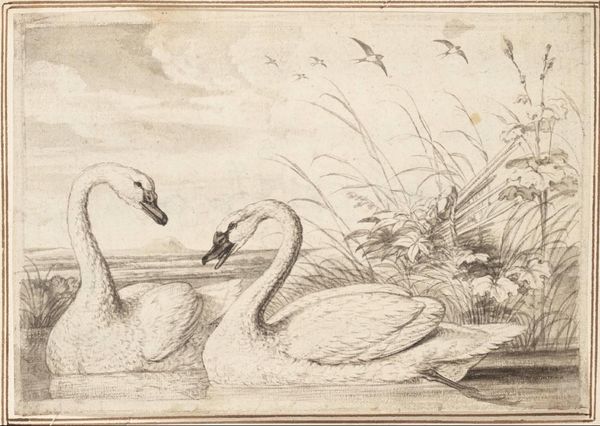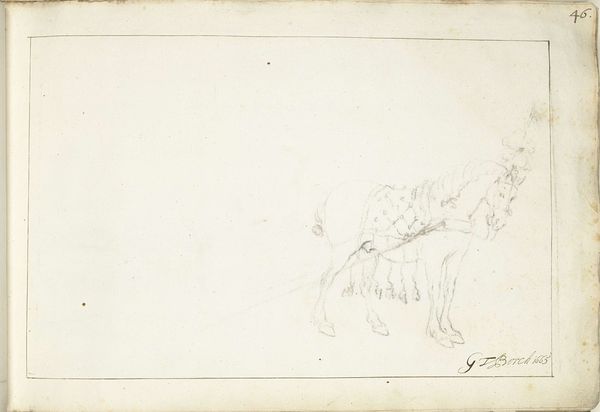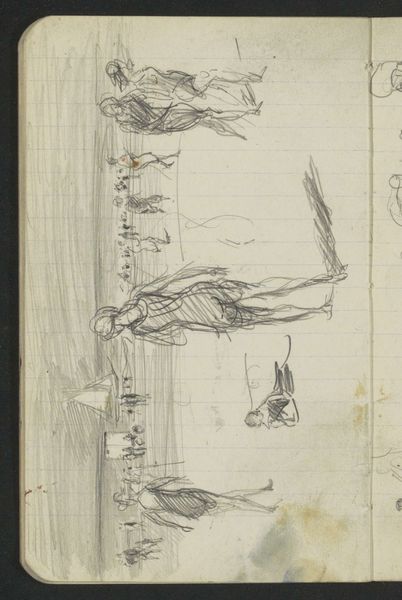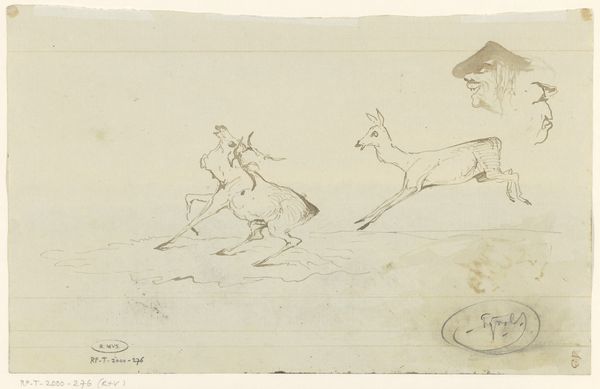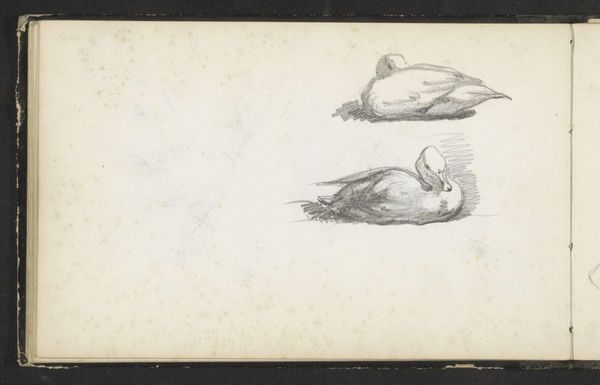
drawing, pencil
#
drawing
#
landscape
#
pencil
#
naturalism
#
realism
Copyright: Rijks Museum: Open Domain
Editor: This pencil drawing from between 1864 and 1868, by Johannes Tavenraat, is titled "Ducks and a Young Heron". It feels so immediate, almost like a page torn from the artist's sketchbook. What stands out to you in this work? Curator: What I find particularly compelling is how this seemingly simple nature study intersects with broader themes of the 19th century. Consider the rise of naturalism and realism at this time – movements that aimed to depict the world as it truly was. Editor: Right, a departure from idealized representations. Curator: Exactly. But Tavenraat's drawing isn’t merely a neutral record. The inclusion of the young heron alongside the ducks, for instance, subtly hints at the food chain, at ecological power dynamics and perhaps speaks to the disruptions industrialization was starting to cause in the natural world. What do you make of the artist's decision to juxtapose these creatures? Editor: I hadn't considered that angle. It does seem to subtly highlight a hierarchy, a vulnerability in the heron that you wouldn’t initially notice. It prompts us to look beyond the surface beauty and recognize these inherent relationships. Curator: Precisely. And thinking intersectionally, how might these observations connect with the social hierarchies and power dynamics present in the Dutch society of Tavenraat's time? Are there parallels to be drawn between the vulnerability of this heron and certain marginalized groups? Editor: It is powerful to think of landscape art this way. The heron’s status reflects societal inequalities that need greater understanding. Curator: And by linking art historical contexts with contemporary theory, we unlock new ways of seeing.
Comments
No comments
Be the first to comment and join the conversation on the ultimate creative platform.
